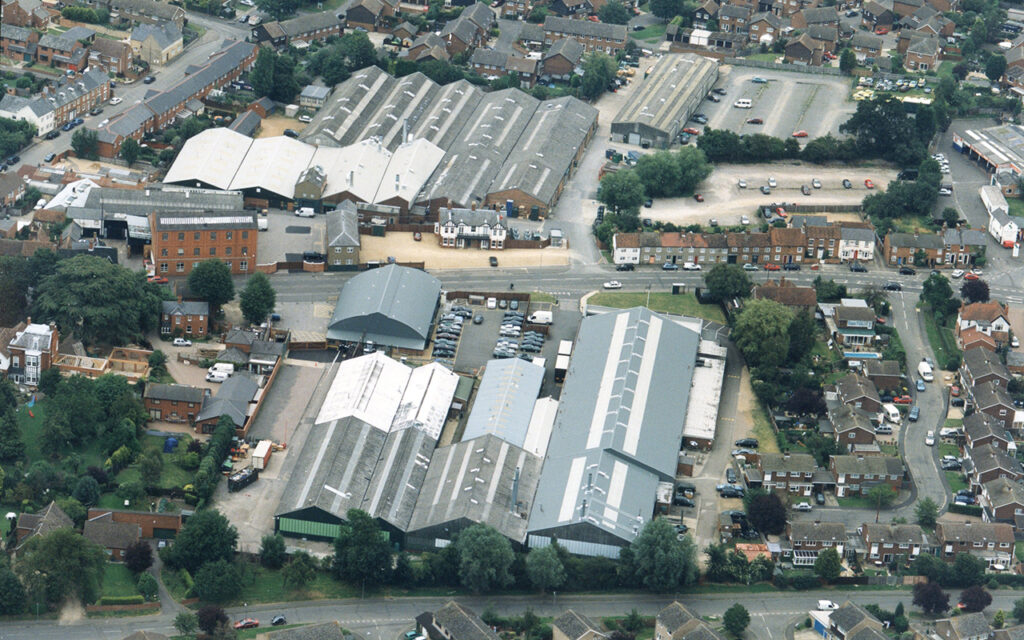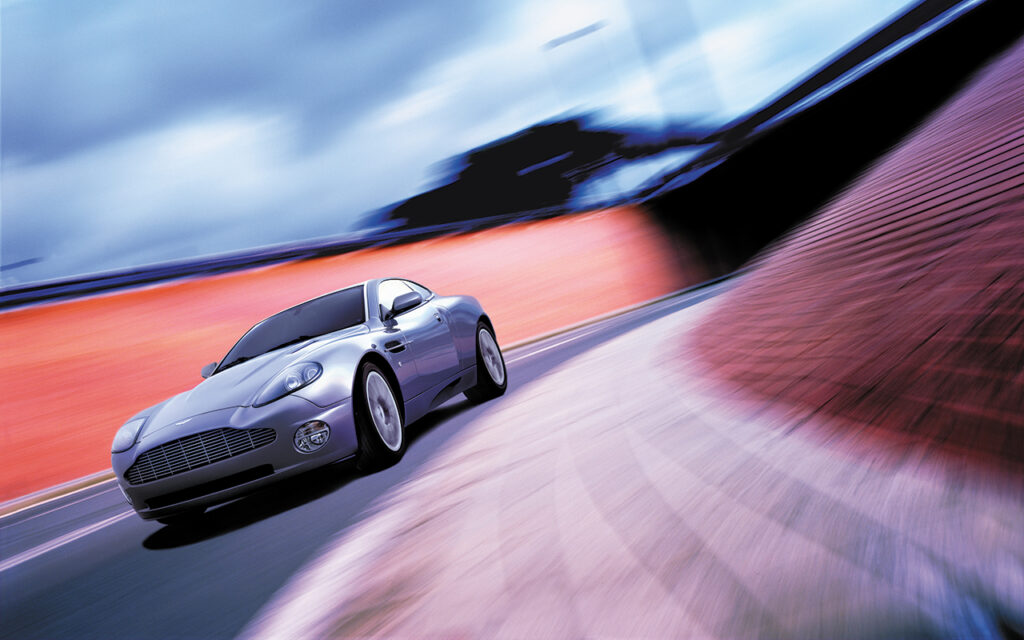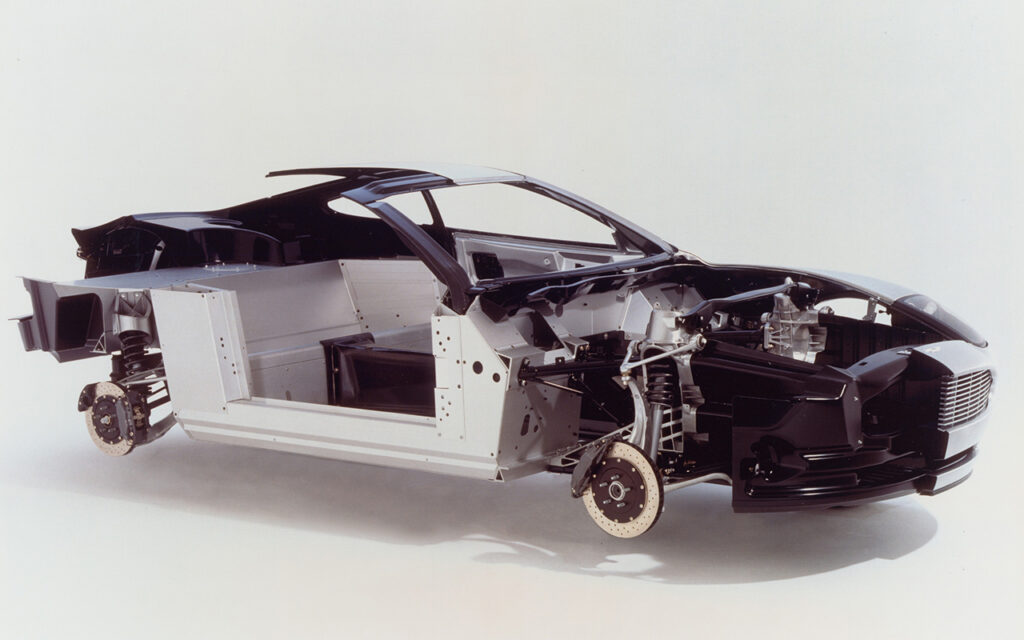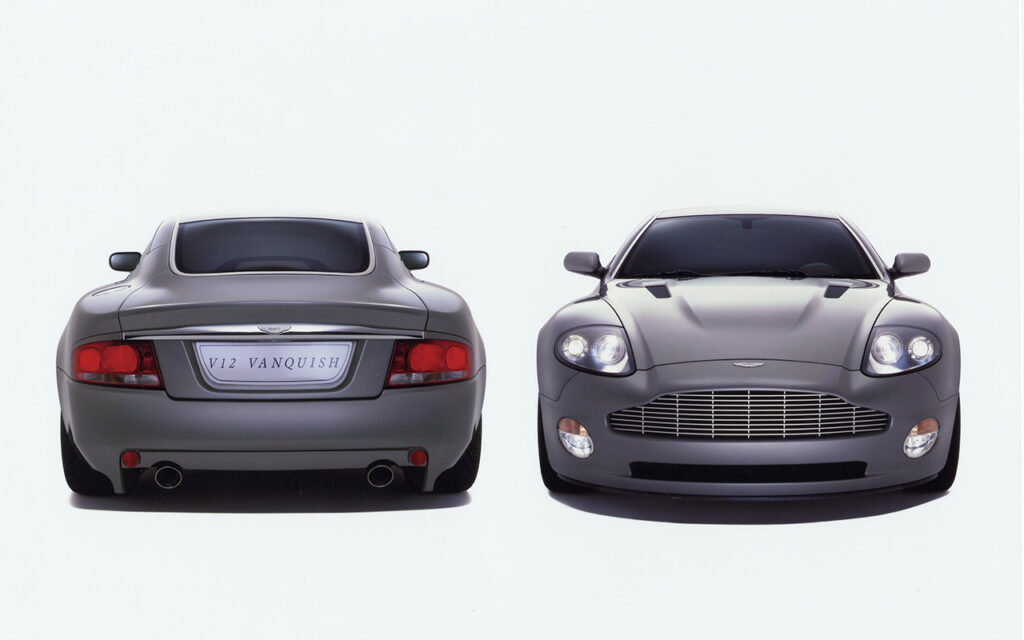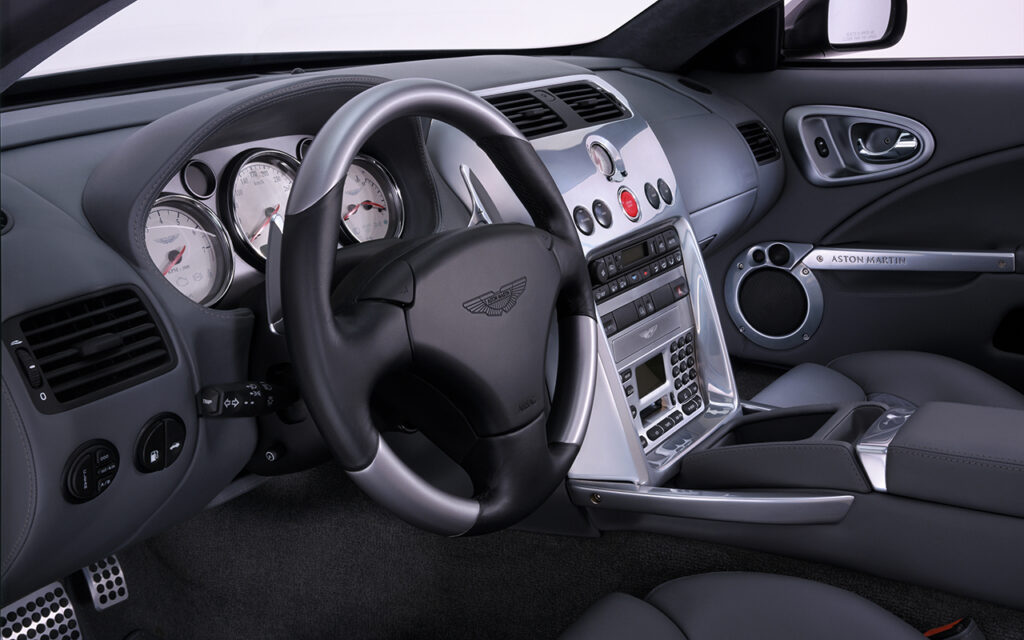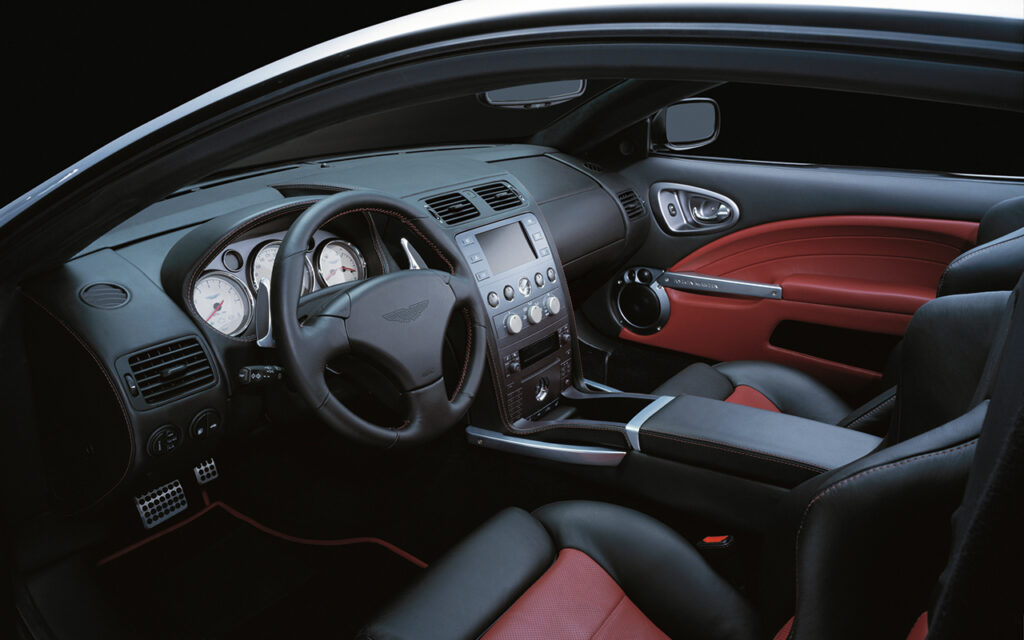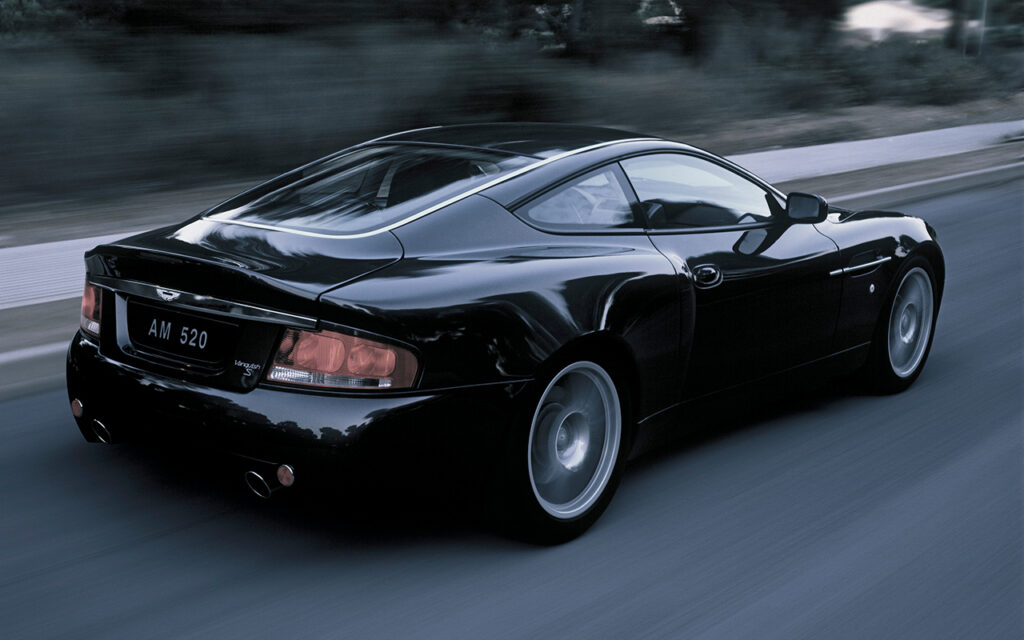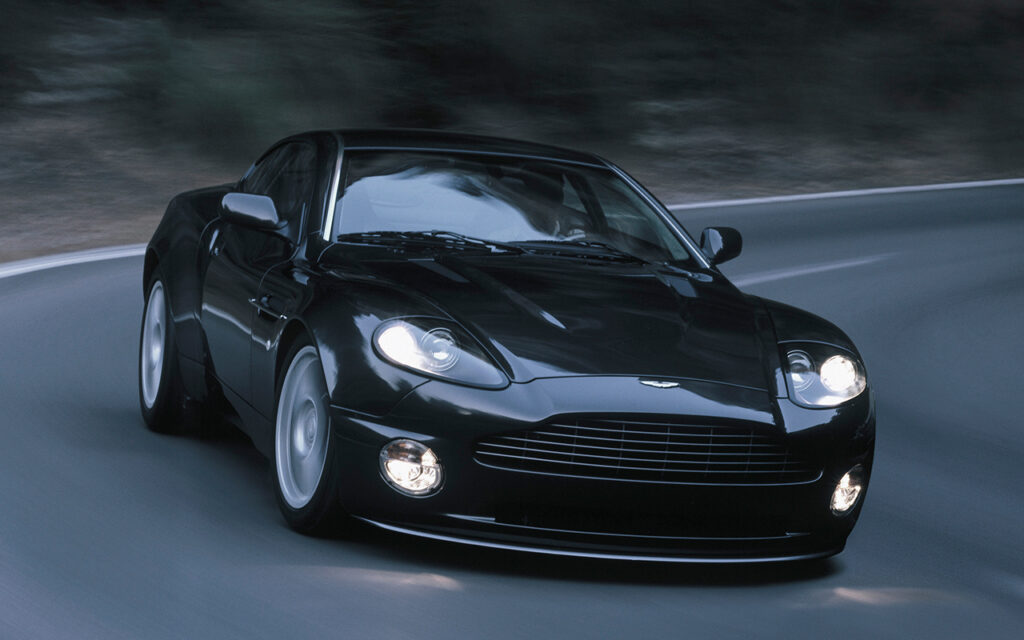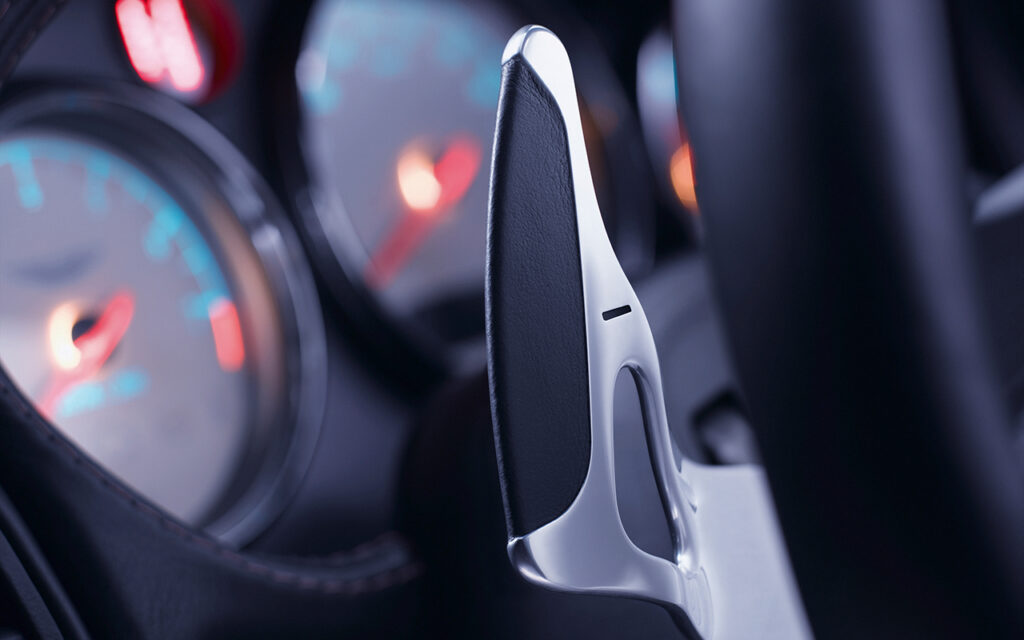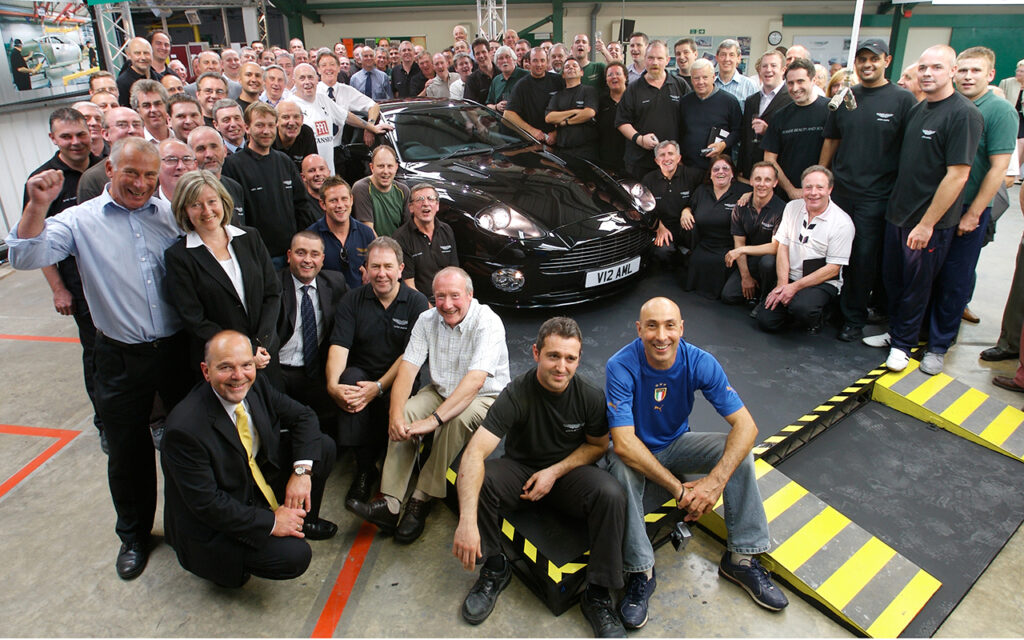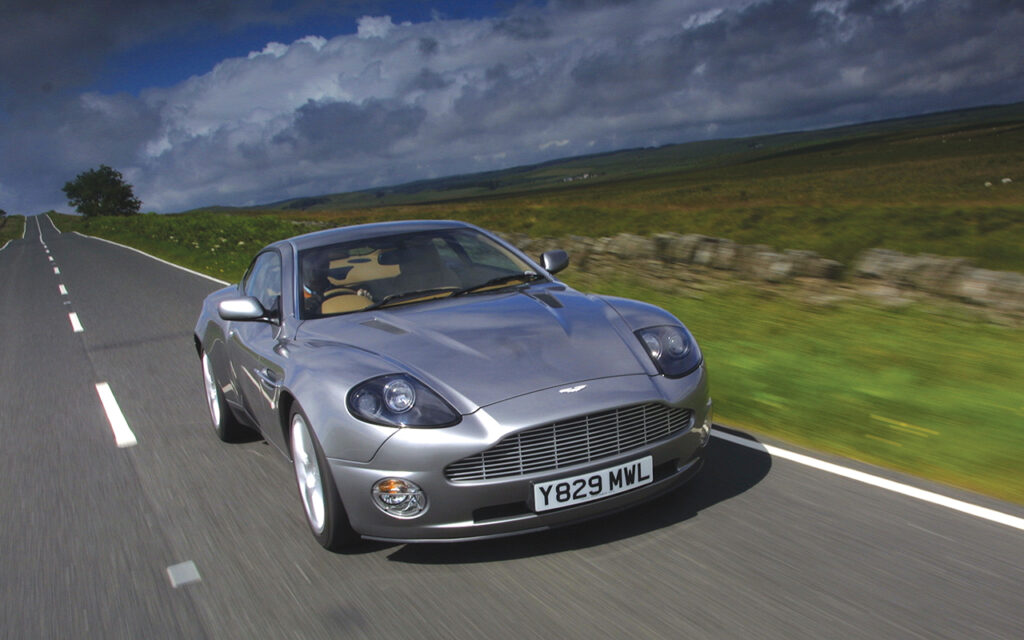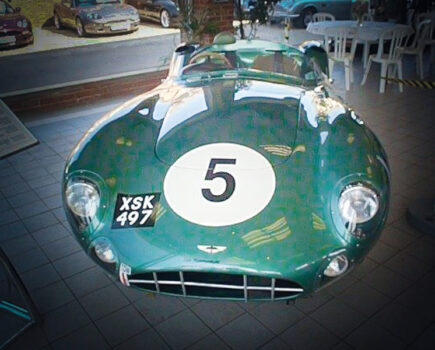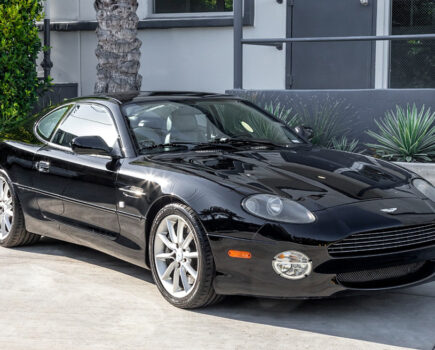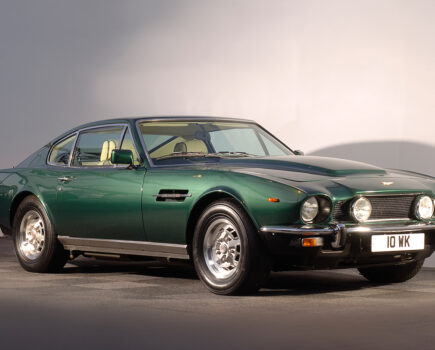The V12 Vanquish, produced without a DB badge, stood as a bridge between the Beach-chassied legacy models and the VH-platform cars that secured Aston’s future
Words: Jon Burgess
Replacing the Virage and Vantage, whose lineage stretched back to the 1974 Aston Martin Lagonda, remained a thorny subject for the firm.
Certainly, exciting things were planned for the Noughties – but the Bloxham-made DB7, in V12 and Zagato form, still had to wind down. The DB line was, as history records, spoken for, but the old guard V-cars, made obsolete by customer whims, safety and emissions regulations, had no direct successor.
Project Vantage, penned by Aston Martin DB7 designer Ian Callum, offered one such route for a V-car successor; although Aston denied it was to be anything more than a concept, plans were afoot to make Project Vantage a reality. A V12 Aston had been mooted since 1993, when the Lagonda Vignale concept car, slated for production was to carry such an engine. Intensive development by Ford saw iterations of the engine evolve through 1996 into 1999, when the DB7 Vantage debuted with a 5.9-litre V12.
That same engine, further modified, went into Project Vantage; its structure, gradually evolved for series production, consisted of bonded and riveted aluminium honeycombs to which a carbon fibre transmission tunnel and A pillars were added, after which, hot formed alumimum body panels were fixed on; a completely flat floor underneath the rear axle kept lift to a minimum. Designed in collaboration with Nottingham University, extensive testing (in which 70 pre-production cars were built) produced a strong, crash-worthy (if labour-intensive) basis for a new V-car. It was something of a learning experience for Aston, applying much of what it gained from the V12 Vanquish into the scalable vertical-horizontal (VH) platform used in the DB9, V8 Vantage, and Rapide variants.
Revealed to the press in 2000, and customers at the Geneva Motor Show in 2001, the V12 Vanquish was Project Vantage made real. A new crankshaft, cams and valve gear lifted the 5.9-litre V12’s power from 420bhp to 460bhp; a six speed, Magneti-Marelli paddle shift semi-automatic was standard, with no manual option available. Vanquish could also be had as a relatively spacious two-seater, or a cramped 2+2.
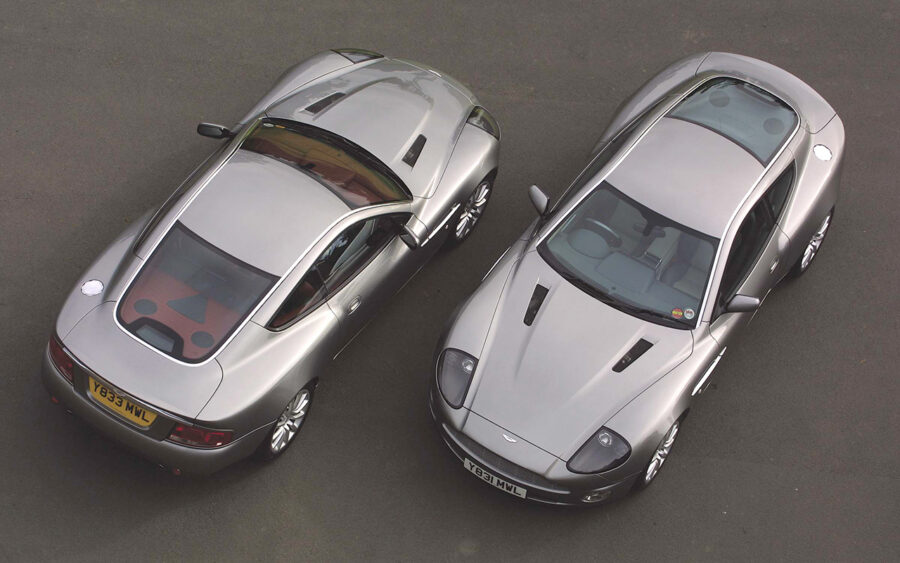
Dubbed Speedshift, the new gearbox delineated Vanquish’s role as a technological showcase, at the behest of incumbent CEO, Dr Ulrich Bez.
Speedshift became Vanquish’s Achilles Heel; customers had trouble reversing and manoeuvring at low speeds, and the press had to be taught how to drive the car in traffic. Although improved markedly for the 2004 Vanquish S, it remained a critical bone of contention, especially when the contemporary VH platform cars, DB9 and V8 Vantage, had the option of a six-speed transmission.
Not that gearbox woes prevented Aston Martin from taking back James Bond from BMW; picked as the hero car for 2002’s Die Another Day, the Vanquish fought off a mini-gun equipped XKR convertible in an Icelandic ice-lake. It could (literally) blend into to the background, fire rockets from its nose, and corkscrew through the air when its iconic ejector seat was deployed.
In reality, seven pre-production Vanquishes were used by EON Productions; three were kept by the first unit for close-ups, while the remaining four were customised with Ford Explorer four-wheel drive systems and 302 cubic-inch Ford V8s for stunts.
Two 2004 concepts were spun off Vanquish; neither led anywhere. Great hopes were placed on a limited run of Zagato Roadsters, penned by DB7 Zagato and AMR 1 designer, Nori Harada; despite the versatility of the four-seater, estate bodied Vanquish Bertone Jet 2, which required no changes the underbody, both proposals stalled.
What did advance Vanquish’s prospects in 2004 was the S. New cylinder heads, better engine management and more powerful injectors lifted peak power to 560bhp; good for 200 mph, it was the fastest Aston Martin built to date, finally coming good on the double ton promised but never reached by the Bulldog.
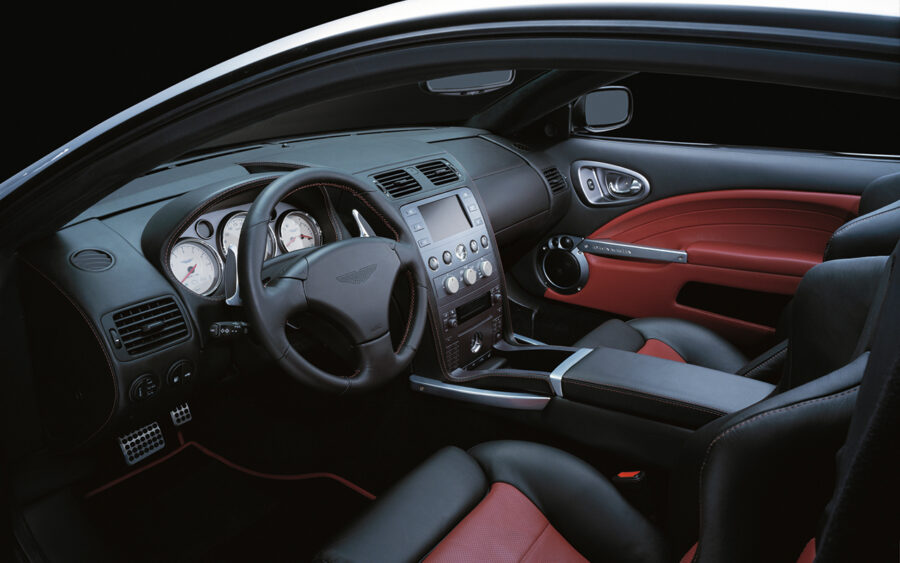
Inspirational though it was, Vanquish died in 2007, with 50 S-based Ultimate Editions signifying the end of the run; sprayed in special a special shade of black, with tailored interior fittings, it also saw the relegation of Newport Pagnell to Works restoration and upgrade status. No longer would Aston Martins be produced there; that job now took place at Gaydon, which had been making the DB9 and V8 Vantage since 2004 and 2005, respectively.
Aston Martin Works was quick to offer a Works upgrade package for Vanquish and Vanquish S owners that year; as Aston left Ford’s Premier Automotive Group, bought by a consortium of investors, a £15,000 conversion finally gave the Vanquish the six-speed manual detractors wanted from the start.
It was a similar story with the 2020 Vanquish 25 by CALLUM; designer, Ian Callum, celebrated two decades of Vanquish by resto-modding 25 examples for customers. Using either a V12 Vanquish or Vanquish S as a starting point, Callum, working with Swiss specialists, R-Reforged, carried out 350 changes to the car. The machine which resulted had an altered nose (Callum resented having to use the DB7 Vantage’s driving lights in period), 580bhp, a choice of three gearbox options (Speedshift, six-speed manual, six-speed automatic) and a myriad of suspension and geometry changes.
The Vanquish, then, will never be forgotten. Immortalised by Bond, and perfected by its designer, it left a legacy all of its own.
Aston Martin V12 Vanquish timeline
1998
Ian Callum-designed Project Vantage debuts at the New York International Motor Show. Larger and more powerful than the DB7 GT, which Callum also designed, the carbon fibre and aluminium bodied Vantage also showcased a new paddle-shift semi-automatic gearbox from Magneti Marelli. The Ford and Cosworth co-developed 5.9-litre V12 from the last DB7s is also present.
Aston claimed that Project Vantage had no production equivalent. Eventually sold into private hands, the running car survives (complete with odometer forever reading ‘007’) in the collection of actor and Aston Martin enthusiast, George Nicholas.
1999
Aston Martin is placed into Ford’s Premier Automotive Group (PAG); Aston is joined in the portfolio by Land Rover, Lincoln, Jaguar, Mazda and Volvo.
2000–2001
V12 Vanquish arrives – a productionised Project Vantage with a flat floor for aerodynamics, a retuned, 460bhp, 5.9-litre V12, and a controversial Speedshift ‘robotised’ manual gearbox. Production starts at Newport Pagnell, but the bonded and riveted structure is labour intensive, and time consuming to build. Aston move headquarters to Gaydon, Warwickshire.
2002
A V12 Vanquish appears as James Bond’s ‘hero car’ in Die Another Day. Complete with weapons, including thermoptic camouflage, the second unit cars were in fact four-wheel-drive, Ford V8 engined mules built specifically for the job, converted from the pre-production Vanquish prototype run.
2004
Zagato, reviving a historic working relationship, has DB7 Zagato and AR1 designer, Nori Harada, pen a Vanquish Zagato Roadster. It remained a one-off. DB7 production ends; DB9 production at Gaydon begins. A four-seater estate version of the Vanquish is shown at the Geneva Motor Show; built by Bertone, it was named the Jet 2 in deference to the DB4GT Jet of 1961.
Mechanically revised and restyled Vanquish S is launched. Power now up to 520bhp. Capable of over 200mph, it wouldn’t be until the V12 Vanquish S and One-77 that a non-DB badged Aston could manage the double-ton.

2007
Aston leaves PAG; Vanquish production is wound down, with 50 Ultimate Editions eventually built to commemorate the occasion. It’s the last car to be produced in series at Newport Pagnell after 49 years of service; now designated Aston Martin Works, the facility would restore and uprate historic Aston Martins until 2017, when it continued with commission work and began building 25 DB4GT Continuations. From 2007, Works Service offered six-speed manual gearbox conversions for the V12 Vanquish and Vanquish S, among other mechanical upgrades.
2012
AM310 Concept revives the Vanquish name – but this car is based on the VH Generation III platform and owes nothing to the 2000 V12 Vanquish apart from its evolved engine. Second generation Vanquish production (VH310) begins later that year
2019–2020
V12 Vanquish designer, Ian Callum, announces the Vanquish 25 by CALLUM; a partnership between his firm, Ian Callum Design, and Swiss specialist car manufacturer, R-Reforged, 25 cars are commissioned to celebrate 20 years of the Vanquish.
